10.4: Interest Groups as Political Participation
- Page ID
- 153712
By the end of this section, you will be able to:
- Analyze how interest groups provide a means for political participation
- Discuss recent changes to interest groups and the way they operate in the United States
- Explain why lower socioeconomic status citizens are not well represented by interest groups
- Identify the barriers to interest group participation in the United States
Interest groups offer individuals an important avenue for political participation. Tea Party protests, for instance, gave individuals all over the country the opportunity to voice their opposition to government actions and control. Likewise, the Occupy Wall Street movement also gave a voice to those individuals frustrated with economic inequality and the influence of large corporations on the public sector. Individually, the protestors would likely have received little notice, but by joining with others, they drew substantial attention in the media and from lawmakers (Figure 10.8). While the Tea Party movement might not meet the definition of interest groups presented earlier, its aims have been promoted by established interest groups. Other opportunities for participation that interest groups offer or encourage include voting, campaigning, contacting lawmakers, and informing the public about causes.
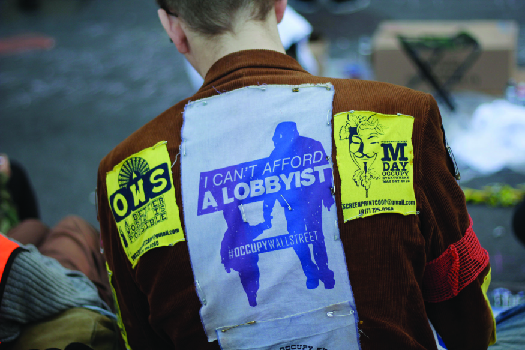
Group Participation as Civic Engagement
Joining interest groups can help facilitate civic engagement, which allows people to feel more connected to the political and social community. Some interest groups develop as grassroots movements, which often begin from the bottom up among a small number of people at the local level. Interest groups can amplify the voices of such individuals through proper organization and allow them to participate in ways that would be less effective or even impossible alone or in small numbers. The Tea Party is an example of a so-called astroturf movement, because it is not, strictly speaking, a grassroots movement. Many trace the party’s origins to groups that champion the interests of the wealthy such as Americans for Prosperity and Citizens for a Sound Economy. Although many ordinary citizens support the Tea Party because of its opposition to tax increases, it attracts a great deal of support from elite and wealthy sponsors, some of whom are active in lobbying. The FreedomWorks political action committee (PAC), for example, is a conservative advocacy group that has supported the Tea Party movement. FreedomWorks is an offshoot of the interest group Citizens for a Sound Economy, which was founded by billionaire industrialists David H. and Charles G. Koch in 1984.
According to political scientists Jeffrey Berry and Clyde Wilcox, interest groups provide a means of representing people and serve as a link between them and government.33 Interest groups also allow people to actively work on an issue in an effort to influence public policy. Another function of interest groups is to help educate the public. Someone concerned about the environment may not need to know what an acceptable level of sulfur dioxide is in the air, but by joining an environmental interest group, he or she can remain informed when air quality is poor or threatened by legislative action. A number of education-related interests have been very active following cuts to education spending in many states, including North Carolina, Mississippi, and Wisconsin, to name a few.
Interest groups also help frame issues, usually in a way that best benefits their cause. Abortion rights advocates often use the term “pro-choice” to frame abortion as an individual’s private choice to be made free of government interference, while an anti-abortion group might use the term “pro-life” to frame its position as protecting the life of the unborn. “Pro-life” groups often label their opponents as “pro-abortion,” rather than “pro-choice,” a distinction that can affect the way the public perceives the issue. Similarly, scientists and others who believe that human activity has had a negative effect on the earth’s temperature and weather patterns attribute such phenomena as the increasing frequency and severity of storms to “climate change.” Industrialists and their supporters refer to alterations in the earth’s climate as “global warming.” Those who dispute that such a change is taking place can thus point to blizzards and low temperatures as evidence that the earth is not becoming warmer.
Interest groups also try to get issues on the government agenda and to monitor a variety of government programs. Following the passage of the ACA, numerous interest groups have been monitoring the implementation of the law, hoping to use successes and failures to justify their positions for and against the legislation. Those opposed have utilized the court system to try to alter or eliminate the law, or have lobbied executive agencies or departments that have a role in the law’s implementation. Similarly, teachers’ unions, parent-teacher organizations, and other education-related interests monitored initial implementation and on-going operations of the No Child Left Behind Act (NCLB) promoted and signed into law by President George W. Bush in 2002. That law was replaced in 2015 with the Every Student Succeeds Act, due in part to continual lobbying by teacher unions who tired of the stronger federal role that NCLB necessitated.34 Interest groups have increasingly utilized digital means to have attention paid to their causes. Perhaps most piercing in effect over recent years is the use of so-called hashtag activism. The hashtag is a visible part of life on Twitter and key hashtags have induced press coverage and press taglines. The most visible such use was likely the #MeToo movement, which snowballed quickly as famous woman after famous woman confirmed that they, too, had faced harrassment.35
Interest Groups as a Response to Riots
The LGBTQ (lesbian, gay, bisexual, transgender, and queer [or questioning].) movement owes a great deal to the gay rights movement of the 1960s and 1970s, and in particular to the 1969 riots at the Stonewall Inn in New York’s Greenwich Village. These were a series of confrontational responses to a police raid on the bar and regular police harassment, humiliation, and abuse of LGBTQ people. The riots culminated in a number of arrests but also raised awareness of the struggles faced by members of the LGBTQ community.36 The events are also recognized as a turning point in LGTBQ identity, when many people began moving from a life of secrecy to a more public one, leading to increased cultural acceptance and securing of rights. The Stonewall Inn has recently been granted landmark status by New York City’s Landmarks Preservation Commission (Figure 10.9).
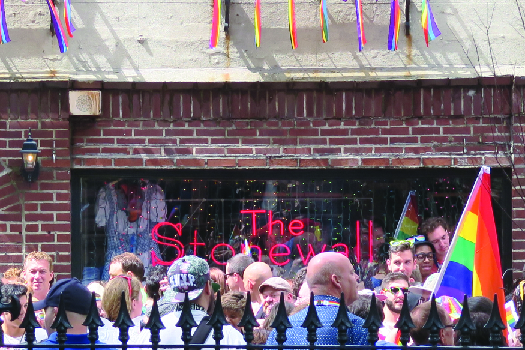
The Castro district in San Francisco, California, was also home to a significant LGBTQ community during the same time period. In 1978, the community was shocked when Harvey Milk, a gay local activist and sitting member of San Francisco’s Board of Supervisors, was assassinated by a former city supervisor due to political differences.37 This resulted in protests in San Francisco and other cities across the country and the mobilization of interests concerned about gay and lesbian rights.
Today, advocacy interest organizations like the Human Rights Campaign are at the forefront in supporting members of the LGBTQ community and popularizing a number of relevant issues. They played an active role in the effort to legalize same-sex marriage in individual states and later nationwide. Now that same-sex marriage is legal, these organizations and others are dealing with issues related to continuing discrimination against members of this community. One current debate centers around whether an individual’s religious freedom allows that individual to deny services to members of the LGBTQ community. This question reached a fever pitch over discussions about restroom facilities for transgender individuals. The Department of Labor's Occupational Safety and Health Administration (OSHA) recommends best practices for restroom access for transgender workers indicating that all employees should have access to bathroom facilities that correspond to their gender identity.38
What do you feel are lingering issues for the LGBTQ community? What approaches could you take to help increase attention and support for gay, lesbian, bisexual, and transgender rights? Do you think someone’s religious beliefs should allow them the freedom to discriminate against members of the LGBTQ community? Why or why not?
Trends in Public Interest Group Formation and Activity
Public Interest Research Groups
Public interest research groups (PIRGs) have increased in recent years, and many now exist nationally and at the state level. PIRGs represent the public in a multitude of issue areas, ranging from consumer protection to the environment, and like other interests, they provide opportunities for people to make a difference in the political process. PIRGs try to promote the common or public good, and most issues they favor affect many or even all citizens. Student PIRGs focus on issues that are important to students, including tuition costs, textbook costs, new voter registration, sustainable universities, and homelessness. Consider the cost of a college education. You may want to research how education costs have increased over time. Are cost increases similar across universities and colleges? Are they similar across states? What might explain similarities and differences in tuition costs? What solutions might help address the rising costs of higher education?
How can you get involved in the drive for affordable college education? Consider why students might become engaged in it and why they might not do so. A number of countries have made tuition free or nearly free.41 Is this feasible or desirable in the United States? Why or why not?
Take a look at the website for Student PIRGs. What issues does this interest group address? Are these issues important to you? How can you get involved? Visit this section of their site to learn more about their position on financing higher education.
What are the reasons for the increase in the number of interest groups? In some cases, it simply reflects new interests in society. Forty years ago, stem cell research was not an issue on the government agenda, but as science and technology advanced, its techniques and possibilities became known to the media and the public, and a number of interests began lobbying for and against this type of research. Medical research firms and medical associations will lobby in favor of greater spending and increased research on stem cell research, while some religious organizations and anti-abortion groups will oppose it. As societal attitudes change and new issues develop, and as the public becomes aware of them, we can expect to see the rise of interests addressing them.
We have also seen increased specialization by some interests and even fragmentation of existing interests. While the American Medical Association may take a stand on stem cell research, the issue is not critical to the everyday activities of many of its members. On the other hand, stem cell research is highly salient to members of the American Neurological Association, an interest organization that represents academic neurologists and neuroscientists. Accordingly, different interests represent the more specialized needs of different specialties within the medical community, but fragmentation can occur when a large interest like this has diverging needs. Such was also the case when several unions split from the AFL-CIO (American Federation of Labor-Congress of Industrial Organizations), the nation’s largest federation of unions, in 2005.43 Improved technology and the development of social media have made it easier for smaller groups to form and to attract and communicate with members. The use of the Internet to raise money has also made it possible for even small groups to receive funding.
None of this suggests that an unlimited number of interests can exist in society. The size of the economy has a bearing on the number of interests, but only up to a certain point, after which the number increases at a declining rate. As we will see below, the limit on the number of interests depends on the available resources and levels of competition.
Over the last few decades, we have also witnessed an increase in professionalization in lobbying and in the sophistication of lobbying techniques. This was not always the case, because lobbying was not considered a serious profession in the mid-twentieth century. Over the past three decades, there has been an increase in the number of contract lobbying firms. These firms are often effective because they bring significant resources to the table, their lobbyists are knowledgeable about the issues on which they lobby, and they may have existing relationships with lawmakers. In fact, relationships between lobbyists and legislators are often ongoing, and these are critical if lobbyists want access to lawmakers. However, not every interest can afford to hire high-priced contract lobbyists to represent it. As Table 10.1 suggests, a great deal of money is spent on lobbying activities.
| Lobbying Firm | Total Lobbying Annual Income |
|---|---|
| Akin, Gump et al. | $49,870,000 |
| Brownstein, Hyatt et al. | $48,365,000 |
| BGR Group | $31,630,000 |
| Cornerstone Government Affairs | $28,020,000 |
| Holland & Knight | $27,990,000 |
| Ballard Partners | $24,420,000 |
| Squire Patton Boggs | $24,215,000 |
| Invariant LLC | $21,140,000 |
| Forbes Tate Partners | $19,400,000 |
| Capitol Counsel | $19,110,000 |
| K&L Gates | $18,330,000 |
| Mehlman, Castagnetti et al | $17,836,000 |
| Peck Madigan Jones | $17,150,000 |
| Van Scoyoc Assoc | $17,130,000 |
| Crossroads Strategies | $16,550,000 |
| Cassidy & Assoc | $16,430,000 |
| Covington & Burling | $16,340,000 |
| American Continental Group | $15,000,000 |
| Alpine Group | $14,600,000 |
| Subject Matter | $14,550,000 |
We have also seen greater limits on inside lobbying activities. In the past, many lobbyists were described as “good ol’ boys” who often provided gifts or other favors in exchange for political access or other considerations. Today, restrictions limit the types of gifts and benefits lobbyists can bestow on lawmakers. There are certainly fewer “good ol’ boy” lobbyists, and many lobbyists are now full-time professionals. The regulation of lobbying is addressed in greater detail below.
How Representative is the Interest Group System?
Participation in the United States has never been equal; wealth and education, components of socioeconomic status, are strong predictors of political engagement.45 We already discussed how wealth can help overcome collective action problems, but lack of wealth also serves as a barrier to participation more generally. These types of barriers pose challenges, making it less likely for some groups than others to participate.46 Some institutions, including large corporations, are more likely to participate in the political process than others, simply because they have tremendous resources. And with these resources, they can write a check to a political campaign or hire a lobbyist to represent their organization. Writing a check and hiring a lobbyist are unlikely options for a disadvantaged group (Figure 10.10).
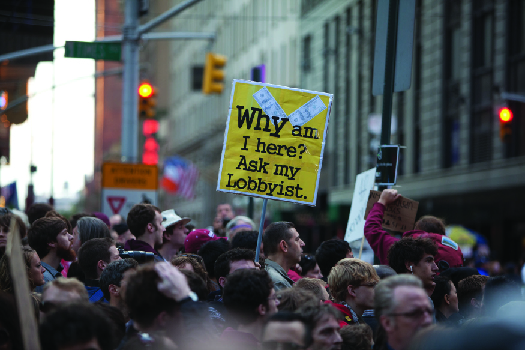
Individually, the poor may not have the same opportunities to join groups.47 They may work two jobs to make ends meet and lack the free time necessary to participate in politics. Further, there are often financial barriers to participation. For someone who punches a time-clock, spending time with political groups may be costly and paying dues may be a hardship. Certainly, the poor are unable to hire expensive lobbying firms to represent them. Structural barriers like voter identification laws may also disproportionately affect people with low socioeconomic status, although the effects of these laws may not be fully understood for some time.
The poor may also have low levels of efficacy, which refers to the conviction that you can make a difference or that government cares about you and your views. People with low levels of efficacy are less likely to participate in politics, including voting and joining interest groups. Therefore, they are often underrepresented in the political arena.
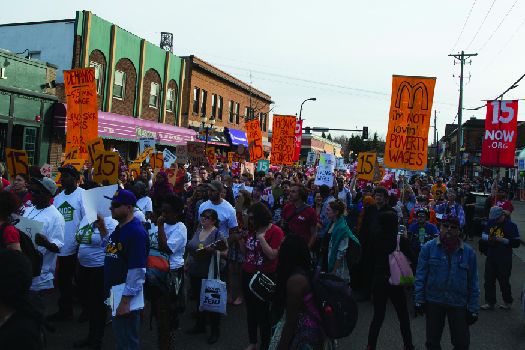
Finally, people do not often participate because they lack the political skill to do so or believe that it is impossible to influence government actions.49 They might also lack interest or could be apathetic. Participation usually requires some knowledge of the political system, the candidates, or the issues. Younger people in particular are often cynical about government’s response to the needs of non-elites.
How do these observations translate into the way different interests are represented in the political system? Some pluralist scholars like David Truman suggest that people naturally join groups and that there will be a great deal of competition for access to decision-makers.50 Scholars who subscribe to this pluralist view assume this competition among diverse interests is good for democracy. Political theorist Robert Dahl argued that “all active and legitimate groups had the potential to make themselves heard.”51 In many ways, this is an optimistic assessment of representation in the United States.
However, not all scholars accept the premise that mobilization is natural and that all groups have the potential for access to decision-makers. The elite critique suggests that certain interests, typically businesses and the wealthy, are advantaged and that policies more often reflect their wishes than anyone else’s. Political scientist E. E. Schattschneider noted that “the flaw in the pluralist heaven is that the heavenly chorus sings with a strong upperclass accent.”52 A number of scholars have suggested that businesses and other wealthy interests are often overrepresented before government, and that poorer interests are at a comparative disadvantage.53 For example, as we’ve seen, wealthy corporate interests have the means to hire in-house lobbyists or high-priced contract lobbyists to represent them. They can also afford to make financial contributions to politicians, which at least may grant them access. The ability to overcome collective action problems is not equally distributed across groups; as Mancur Olson noted, small groups and those with economic advantages were better off in this regard.54 Disadvantaged interests face many challenges including shortages of resources, time, and skills.
Figure 10.12 shows contributions by interests from a variety of different sectors. We can draw a few notable observations from the table. First, large sums of money are spent by different interests. Second, many of these interests are business sectors, including the real estate sector, the insurance industry, businesses, and law firms.
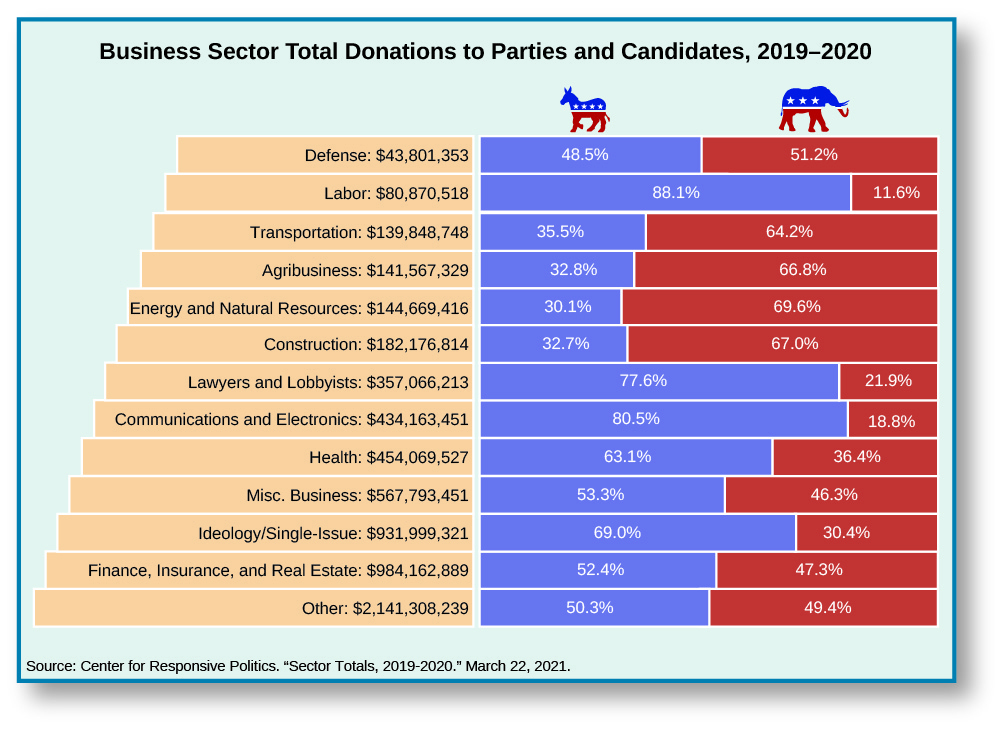
Some interest group scholars have studied the relationship among a multitude of interest groups and political actors, including former elected officials, the way some interests form coalitions with other interests, and the way they compete for access to decision-makers.60 Some coalitions are long-standing, while others are temporary. Joining coalitions does come with a cost, because it can dilute preferences and split potential benefits that the groups attempt to accrue. Some interest groups will even align themselves with opposing interests if the alliance will achieve their goals. For example, left-leaning groups might oppose a state lottery system because it disproportionately hurts the poor (who participate in this form of gambling at higher rates), while right-leaning groups might oppose it because they view gambling as a sinful activity. These opposing groups might actually join forces in an attempt to defeat the lottery.
A good example is the recent dispute between fast food chains and their employees. During the spring of 2015, workers at McDonald’s restaurants across the country went on strike and marched in protest of the low wages the fast food giant paid its employees. Despite the opposition of restaurant chains and claims by the National Restaurant Association that increasing the minimum wage would result in the loss of jobs, in September 2015, the state of New York raised the minimum wage for fast food employees to $15 per hour, an amount to be phased in over time. Buoyed by this success, fast food workers in other cities continued to campaign for a pay increase, and many low-paid workers have promised to vote for politicians who plan to boost the federal minimum wage.63 While the goal of a nationwide $15 minimum wage has not yet been realized, two developments demonstrate significant progress in that direction. First, since 2014, twenty-eight states and the District of Columbia have raised their state-level minimum wage above the federal level, as have forty-five cities. Second, in April 2021, President Biden issued an executive order to raise the minimum wage of federal contractors to $15 per hour.64
Visit the websites for the California or Michigan secretary of state, state boards of elections, or relevant governmental entity and ethics websites where lobbyists and interest groups must register. Several examples are provided but feel free to examine the comparable web page in your own state. Spend some time looking over the lists of interest groups registered in these states. Do the registered interests appear to reflect the important interests within the states? Are there patterns in the types of interests registered? Are certain interests over- or underrepresented?


